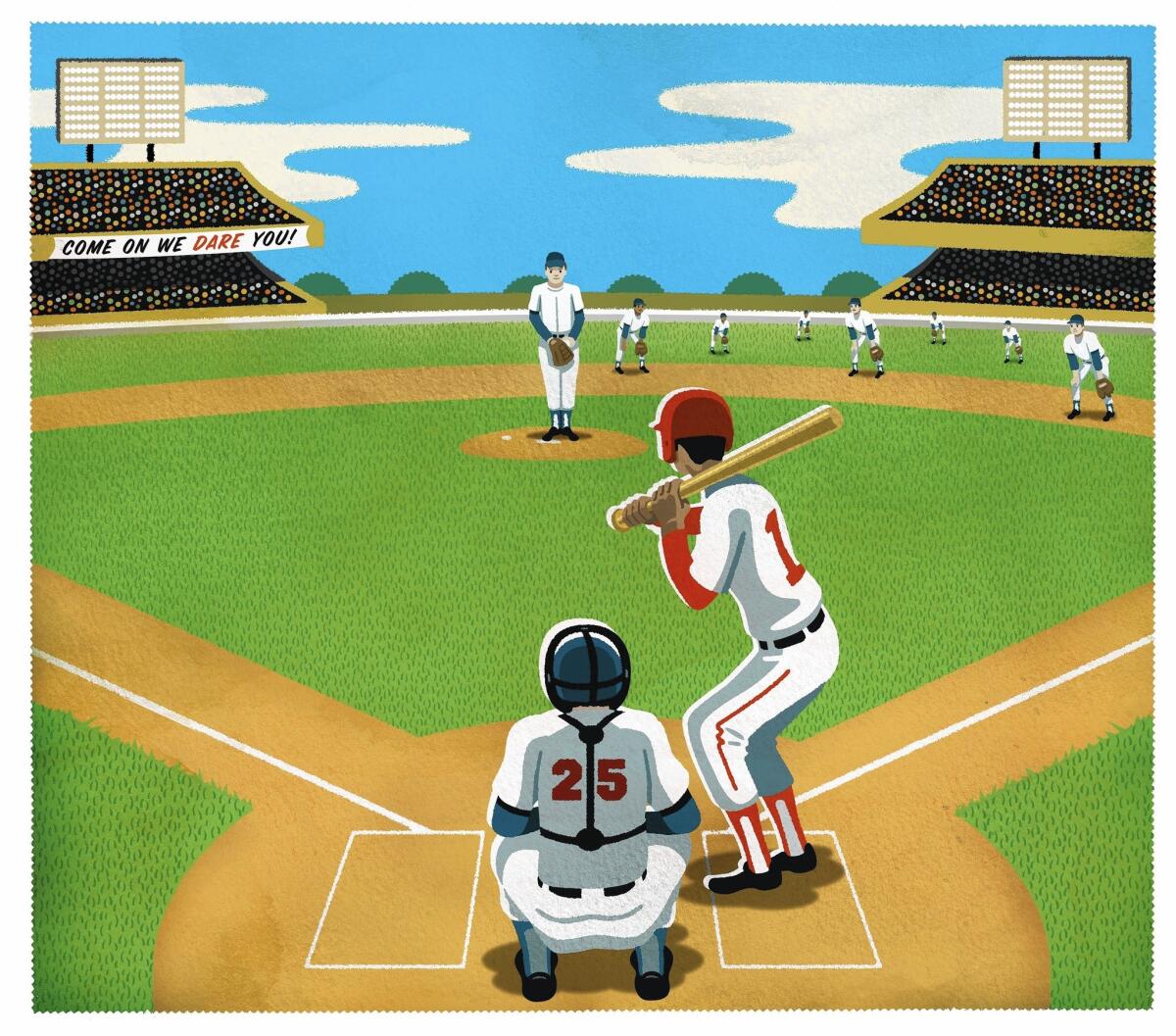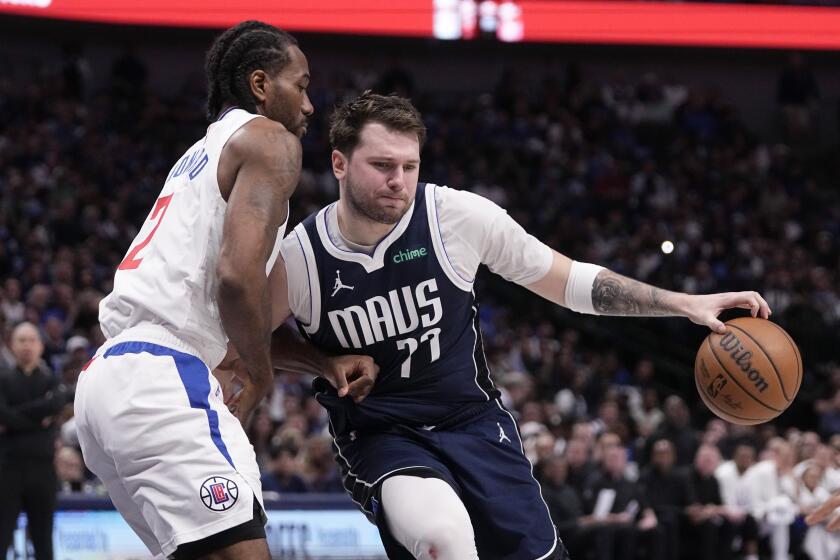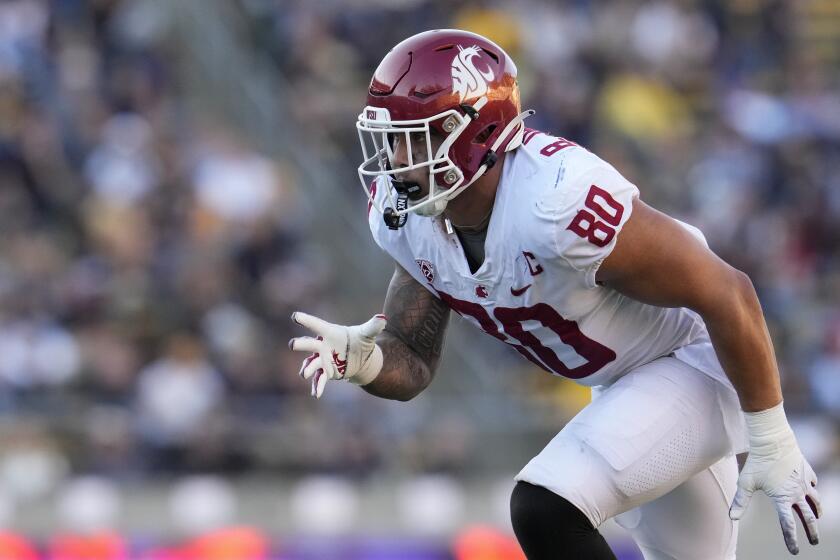Times baseball writers debate defensive shifts

Illustration on baseball defensive shifts.
Pedro Moura (PM), who covers the Angels, and Andy McCullough (AM), who covers the Dodgers, have views on some baseball topics as different as night and day. In a season-long series, they will debate a trending topic in an email exchange. In this AM/PM installment, they discuss the merits of defensive shifts.
::
Andy McCullough: Hey Pedro, how is it going? Not well, if you play on the Angels and are in charge of scoring runs.
Anyway, I wanted to talk to you about defense shifts. I am in favor of them, as I imagine you are. But I’ve been wondering: Do you think they are a fad or will hitters learn to adjust?
Also: What was your favorite Prince song? Mine is “I Could Never Take the Place of Your Man.”
Pedro Moura: Hi Andy. It is a good thing I don’t play on the Angels and am also not in charge of scoring runs. They are having trouble with that.
You’re right, I believe in shifts. But I don’t believe they are a fad. I think they are only going to increase from the record numbers of recent seasons. Even if more hitters figure out how to hit through shift-created holes, smart teams will be able to adjust their defenders faster than most hitters can change their approach.
For a long time, I was against extensive shifts because I thought it overloaded the infielders with tasks. I recently realized they are bored enough already, so let’s be kind and give them something to distract their minds.
My favorite Prince song is “Pop Life.”
AM: One of the things I noticed while covering the Kansas City Royals in 2014 and 2015 was how often the team hewed toward the traditional when it came to shifts. The coaching staff maneuvered the outfielders a ton — which has never really been considered radical — but the infielders usually played something close to straight-up. One of the reasons: shortstop Alcides Escobar felt uncomfortable being out of his natural spot, and his movement was less fluid.
So if the shifts are going to get more radical and more common, it would stand to reason that the positioning should be taught at the lower levels. Do you think youth teams should be shifting? High school? College? I wonder how this might affect the development of players.
PM: I get what you’re saying. It’s difficult to ask a man who has spent his entire life developing his abilities at shortstop to switch to second base on occasion and play the spot well.
Those problems could be limited if baseball begins to teach shifting at lower levels of the sport. It probably does not need to start with children, but I could see it making sense in high school and definitely in college. There are already college teams that make heavy use of shifts. From what I’ve read, those teams have had success so far.
I think it could actually benefit the development of players. As we both know, most college shortstops won’t play shortstop in the major leagues. This way, they can gain experience playing positions they are more likely to man professionally.
AM: It’s interesting that you think it would benefit players to shift at a young age. It makes some sense, but the downside is that a player never truly can learn the intricacies of one position. So you end up with an industry of jacks-of-all-trades and no masters.
When I covered the New York Mets a few years ago, the front office of Sandy Alderson wanted to emphasize on-base percentage at the minor league levels. A noble goal, right? Making outs is bad, and not making outs is how you score runs, and scoring runs is how you win games. But a lot of the younger players felt like some of the organization’s mandates took away their strengths, and they felt like they were being asked to be passive. The law of unintended consequences, and all that.
Hey, did you ever figure out why Jered Weaver was so angry the other day?
PM: I never quite figured out why Weaver was upset, but my guess is that it stems from what he said at the season’s outset. He strongly felt that the media was “hating” on him, said that he thrived on that hate, and then, in very vulgar terms, detailed that he did not want reporters turning around and praising him when he had success.
I suppose me asking him why his fastball command was better in his most recent start than his previous outing qualified as praise.
Anyway, Weaver seems to be an opponent of shifting, actually. It is a joy to watch him demonstrably throw his hands up on the occasion of a hit going through where defenders would have been.
I understand your point about the Mets and passivity. Former Oakland players have said similar stuff to me about the Athletics’ regime. I would argue, though, that asking players to not swing at pitches they otherwise would have is a far more significant request.
Like you, I think there’s a possibility that shifting younger ballplayers could lead to a more versatile, less specifically skillful industry. That would likely be less entertaining to the viewing public. But we won’t know the results until we attempt the experiment.
AM:
Much like Weaver, Clayton Kershaw also dislikes giving up those shift-aided hits. I am pretty sure the Dodgers mostly play straight-up behind him.
In fact, STATS LLC released shift data through the first few weeks of the season. The Angels ranked fifth in the amount of shifting. The Dodgers were 20th.
So I guess the question I’ll pose is: Do you think Little League teams will implement an industry-wide, ahem, shift to shifting? And when?
PM: No, I do not think that. I think that until advanced hitters prove they can adjust where they hit the ball as fast as defenses can adjust where they base their defenders, the shift will survive and thrive.
But, yeah, the Angels were pacing baseball in shifts through the first 10 games. Then their pace dropped off dramatically. It sounds as if you are on their side. I’ll let them know.
More to Read
Get our high school sports newsletter
Prep Rally is devoted to the SoCal high school sports experience, bringing you scores, stories and a behind-the-scenes look at what makes prep sports so popular.
You may occasionally receive promotional content from the Los Angeles Times.








